|
Timelines. We talked about using them to capture your own story in a previous BLOG. You’ve probably heard about using them in genealogy but wondered if they were only for the data obsessed. Or you think ‘I have all my key dates for my ancestors captured in my genealogy software’. Perhaps you do but let’s talk a bit more about that. I have found timelines to be a great way for organizing your family story because it almost creates an outline for you…especially if you are telling the story chronologically. Timelines can do much more. We all have a pesky ancestor who refuses to be found in the records and collateral documents that we would normally find them. We can use a timeline to narrow down the time gaps in our story, identify missing information and make sure that we’ve noted the source documents to support the dates we have. As an example of how this worked for me, I’ll tell you about my great uncle “Fred”. For most of his life from childhood to young adult, he faithfully showed up in all the census and land records. Then by the 1920s, he’d disappeared. There was family gossip that he’d died a vagrant in Denver or he was married several times or that he moved to Indiana. I started to list the dates and sources on a timeline, searched records without results until finally two key census records helped narrow my focus. He was found in the 1930s census with a new wife and family. He was not in the 1940s census…it looks like they started to list him as head, crossed that out and put his wife as widowed. Hmmm. So now it looks like he may have died between 1930 and 1940. That is still ten years so what other information could I use to narrow this gap? City directories and birth dates of his children. I also had a picture that showed him visiting my grandparents in 1937. All these data points reduced the ten years to three years. It was more reasonable for me to now try to find a death or obituary record within this timeframe. Those two missing pieces resulted in solving this mystery…he died in May 1938. Now that I have these great data points for Uncle Fred, I can map out his life and create a story to share with family and a great mystery has been solved. A quick search will show several different options for timelines. I find Microsoft Excel works the best for me as I’m able to include pictures, snippets of data and use the tabs to manage dates. I’ve included a few links to help kickstart your search for ways to do timelines.
“If history were taught in the form of stories, it would never be forgotten.” Rudyard Kipling A friend of mine had a brilliant idea. She decided to do a timeline of her own life as part of her genealogy. Now that she has it created, every year she adds the highlights to the year—grandchild born, trip to Missouri, special events, etc.
Timelines help us organize our family story and add structure, but we often don’t think about doing them for ourselves or for people that we have known all our life. We know our parents from when we are small, throughout our life. After my friend’s mother passed away, she realized there was a significant number of years that she didn’t have information about—namely those years prior to my friend’s birth. As she created her mother’s timeline, she did due diligence by finding genealogy evidence to support stories about her mother’s country school teaching. These in turn pinpointed locations and dates where her mother lived. Timelines become condensed diaries of life’s important events. While some of you might be lucky to have great grandma’s diary, most of us are not as fortunate. As we too will be part of history one day, your timeline will be a gift to future generations as they learn more about you. Your Challenge:
Did creating your own timeline, give you research ideas for your ancestors? I found that it made me want to look for more details beyond the dates such as places, schools, neighbors—all those things that help us create a more interesting family story. Enjoy exploring your timeline! “Time has a wonderful way to show us what really matters.” -Margaret Peters Céad Míle Fáilte – a hundred thousand welcomes!
Happy St. Patrick’s Day! The day that everyone wishes has Irish ancestry! For those who actually do have Irish ancestry, here are a few links and tips for researching and writing about your Irish roots. If you’ve started looking into your Irish roots, you may have found that without knowing the home village, it is a bit like looking for a needle in a hay stack. The key to success in Irish research is to first do your research in the United States and Canada or wherever else your Irish ancestors settled after Ireland. As mentioned in a previous posting, I was fortunate enough to have one ancestor’s village and county spelled out in his obituary. Because of this I was able to travel to County Donegal and visit relatives who still lived in the “home place”. Most of us are not that lucky. My other Irish branch has been challenging. I can find many records in both the United States and Canada. However, the key records to help me pinpoint a location in Ireland have remained elusive. Death records or obituaries seem to be non-existent. As more records are unearthed—some online and others on location—it is important to go back and review your research. Records that I’ve given up on finding have become available. As you do your research and start work on writing your family story, what can you do if you feel your research isn’t complete? (Trick question! Geno bugs know the research is never done!) It is important to organize the information and write about your ancestors. All that research doesn’t benefit your descendants if it exists in scraps and pages in binders, boxes or even on your computer hard drive. Don’t wait to write your story! Read more about Ireland to understand what it was like for your ancestors. There is a plethora of books on the subject. I've found these books useful in understand Irish history and immigrant experiences.
For continuing research in Ireland, here are some great resources: Irish ancestors can be among the most interesting and elusive. The key is to continue to search and write about what you do know and share with family and friends. Go n-éirí leat! (Good luck!) 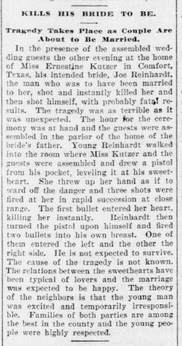 Wood County Reporter Grand Rapids, Wisconsin Wood County Reporter Grand Rapids, Wisconsin What’s the news?’ This is a common greeting among family and friends. Have you started using old newspaper articles to supplement your family history? Old newspapers are a wealth of information for family historian. I've included a newspaper article that you might hope wasn’t about your family. Imagine the horror for family and friends when a young bride is murdered in front of the guests by the bridegroom! Tragedies leave a mark on the family and their story. How did they recover from this? What happened to the groom’s family in that community? Were they ostracized? Are there more articles to follow about the bride, groom and family in the local newspaper? On a lighter note, my favorite tidbits are from small town papers with local correspondents. They had the pulse of the neighborhood with feelers capturing tidbits like the all-important news that ‘Sunday visitors at the Hansen farm included Mr. and Mrs. What and their boy Tom’. Now before you laugh…there is key information in that short sentence. You learn the following:
Using this information with what you already know about your ancestor through census records, birth records and other hard evidence, you can paint a more complete story. Obituaries can be helpful as you comb through the information. One great grandfather's obituary included his hometown and county in Ireland as well as family information and his journey to America. His death certificate did not have his village in Ireland! A good reminder to check other sources. Alas we are not always that lucky. Another relative had this pithy notice of his death: ‘An old man named Kutzer died south of this town.’ While certainly lacking info, I did know that he lived south of that particular town and had his approximate death date which I could then use to corroborate with burial, civil war pension, and death records. Perhaps your family had tragic deaths of children from diphtheria that made the paper? Or was your grandmother’s wedding dress is described in fine detail, along with a list of relatives attending? Your challenge:
A word of caution...a reporter might not get all the facts right so compare and confirm information with other resources. After a tornado hit our farm, a local newspaper included a picture of my cousins and me sitting on a fallen tree, erroneously noting that we were all three daughters of my parents! Suddenly my cousins were my sisters and our family almost doubled in size! While my cousins are as dear to me as sisters, I do wonder what a future genealogist will make of that article 100 years from now. Resources There are many sites that include newspaper resources online with some free and others fee-based. I’m including these for your convenience. Remember sometimes to get the article you need, it requires feet on the ground or a well-crafted letter as not all papers are available online yet. Chronicling America Newspapers.com GenealogyBank.com Newslibrary.com FindMyPast.com Ancestry.com FamilySearch.com Canadian Newspapers -listing of free online digitized newspapers across the provinces from BGSU Libraries. |
AuthorWith a lifelong passion for genealogy and history, the author enjoys the opportunity to share genealogy tidbits, inspiring others to research and write their family story. Archives
July 2024
Categories |
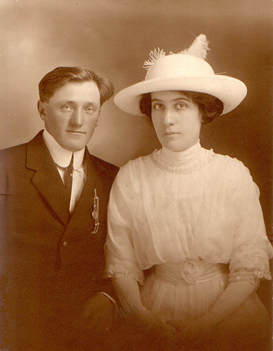
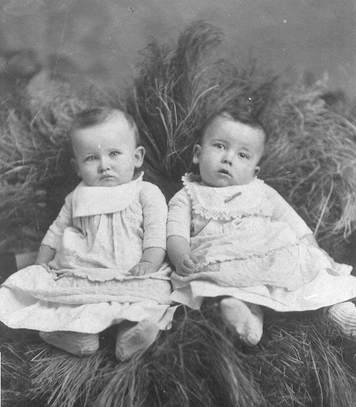
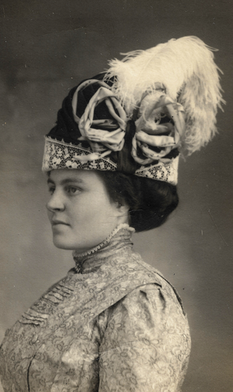
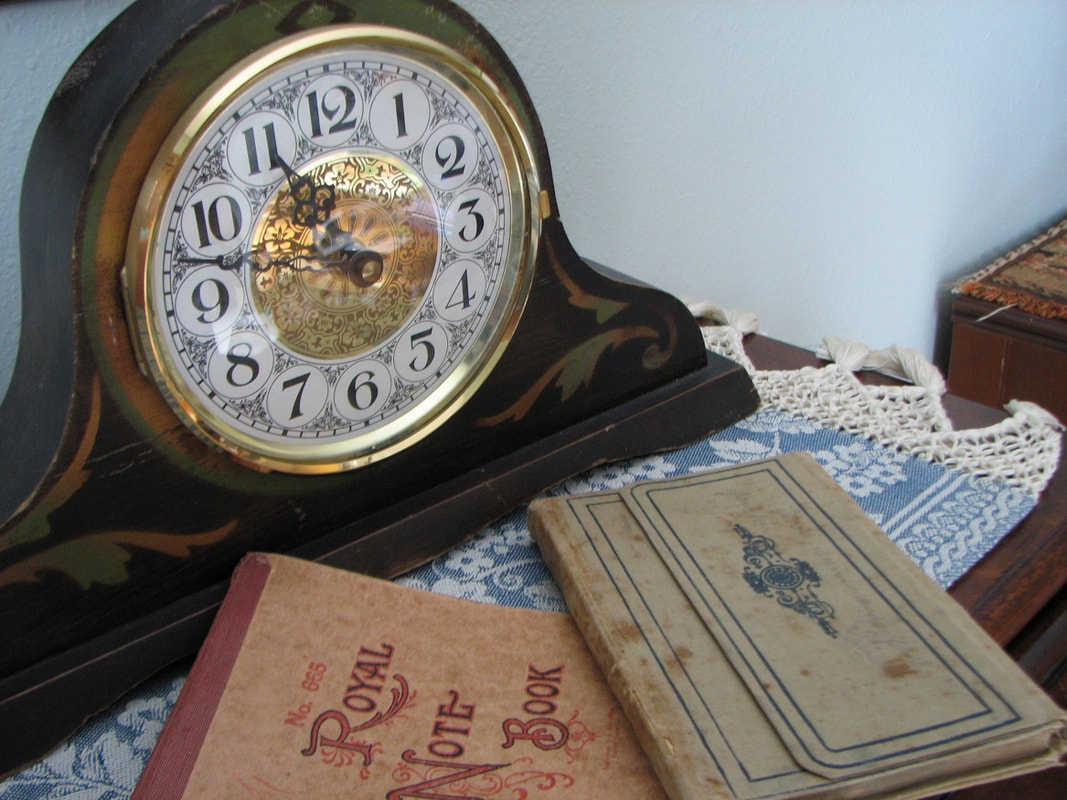
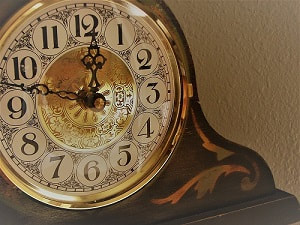

 RSS Feed
RSS Feed